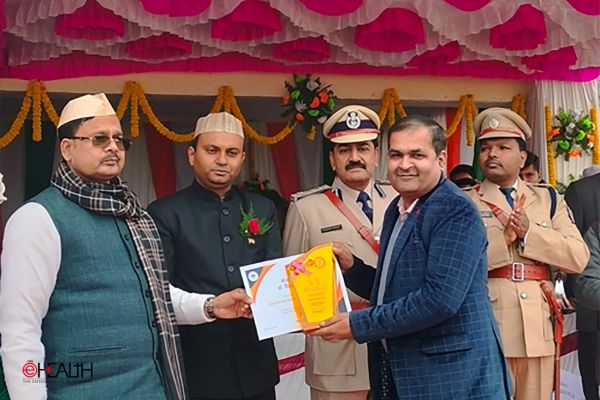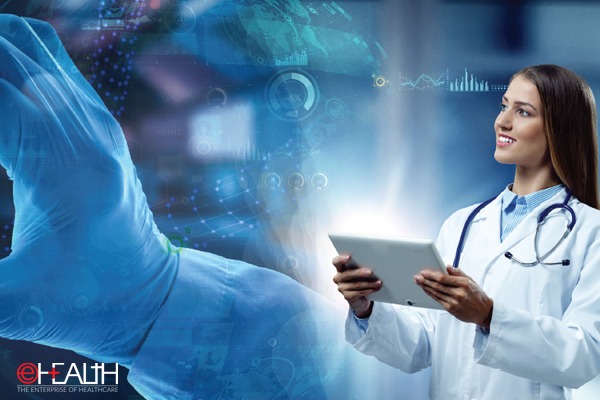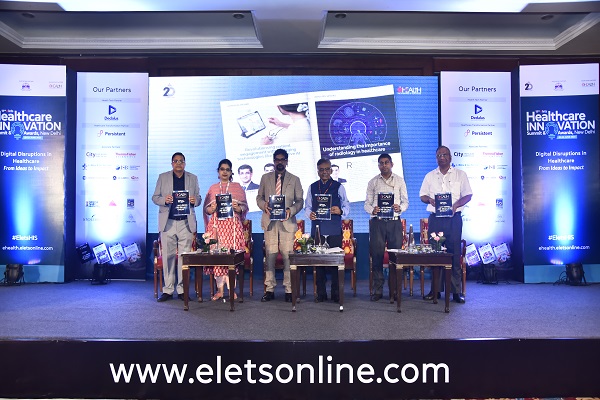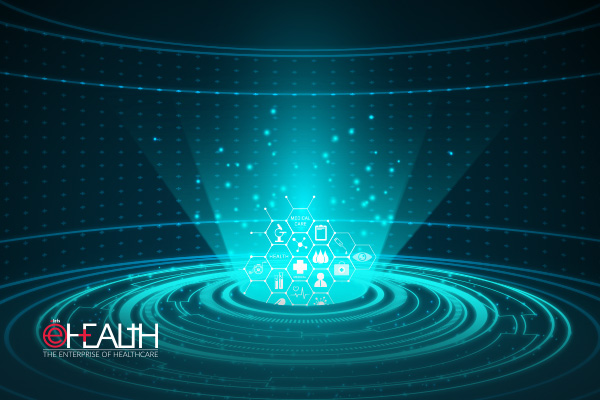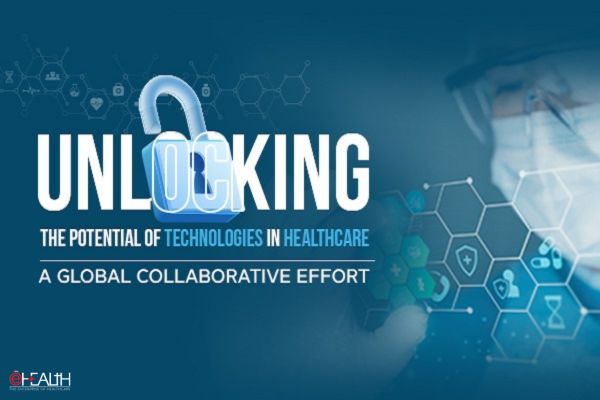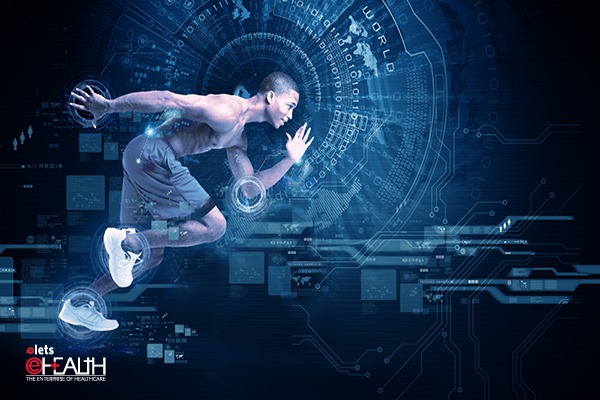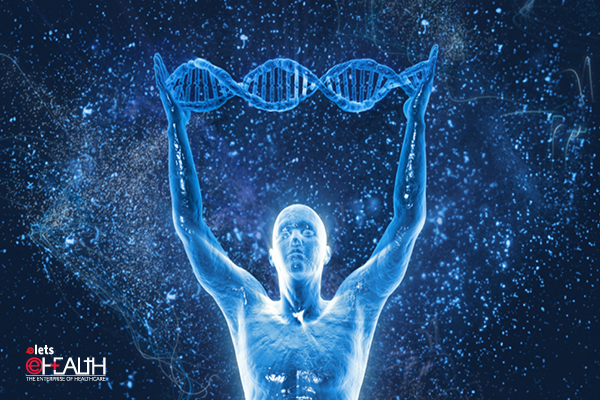Patient Monitoring System (PMS) offers faster and easier access of patient information in a comprehensive way. Over the years, the usage of the system has increased manifold with increasing cases of emergency care and beyond. A report! By Sharmila Das, ENN
 Rajat Agarwal,
Rajat Agarwal,
Consultant, Critical Care Medicine, Fortis
Escorts Heart Institute

Care of patients in critical areas is not possible without monitoring systems. They help us to make day to day patient management decisions faster and easier, this has made evident difference in patient care outcomes.
Patient monitoring system is the term for all the various devices that are used to supervise patients. One category of such devices alerts the medical staff if the patient gets into a critical state. Example of one such device is a heart monitor. The need for patient monitoring is apparent in situations where the patient is: in unstable physiological regulatory systems, for example in the case of a drug overdose or anesthesia. Patient monitoring is not a new concept in healthcare. The first primitive patient monitoring started with the work done by Santorio in 1625 that was measuring of body temperature and blood pressure. The development of new technology after World War II and up to today has developed a vast amount of different types of monitoring that can be done.
Dr Vikram Khatri, Consultant, Intensive Care Unit, Moolchand Medcity, New Delhi says, Patient monitoring is the primary thing which allows clinician to detect abnormal physiology, which changes rapidly to changing situation of patients physiological condition. Change in physiology and objective measurement of it such as a low or high BP, oxygen saturation or heart rate combined with patient history and physical ex-amination helps the doctors make diagnoses. Technology helps in objectively quantifying the derangement of body function in the human body. Continuous monitoring if these and other parameters help the clinicians reduce the lag time in identifying a changing state of patient and acting appropriately. That may include escalation or de-escalation of herapy

Where to fit?
It is almost imperative for operating rooms, emergency rooms, intensive care units and critical care units to have patient monitoring equipment. Its applications span across various specialties including respiratory care, recovery rooms, out-patient care, patient transport, radiology, cathe-terisation labs, and gastroenterology departments, among others. Products in the Indian market range from single- parameter instruments to specialised multi-parameter instruments.
Dr Rajat Agarwal, Consultant, Critical Care medicine, Fortis Escorts Heart Institute says, Care of patients in critical areas is not possible without monitoring systems. They help us to make day to day patient management decisions faster and easier, this has made evident difference in patient care outcomes. A patient monitor may not only alert caregivers to potentially lifethreatening events; many provide physiologic input data used to control directly connected life-support devices. Repeated or continuous observations or measurements of the patient, his or her physiological function, and the function of life support equipment, for the purpose of guiding management decisions, including when to make therapeutic interventions, and assessment of those interventions. There are at least four categories of patients who need to be treated in a monitoring system:
Physiologic monitoring: Patients with unstable physiologic regulatory systems; for example, a patient whose respiratory system is suppressed by a drug overdose or anesthesia. Patients with a suspected lifethreatening condition: For example, a patient who has findings indicating an acute myocardial infarction (heart attack).
Patients at high risk of developing a life-threatening condition: For example, patients immediately post open-heart surgery, or a premature infant whose heart and lungs are not fully developed.Patients in a critical physiological state: For example, patients with multiple trauma or septic shock.
Patient monitoring today
The experts say to a large extent computer based monitoring and intensive care unit systems have become cheap enough to be deployed on a large scale in many intensive care units around the world. The bedside has become an important point of displaying data. Bedside monitors have capabilities of intelligent monitoring, intelligent alarming, plug and play modules, TCP/ IP and Ethernet networking and many other features provide easy, integrated monitoring in any facility. The systems often provide database and analysis functions that previously only was available on large systems. Most bedside monitors sold today can incorporate data from clinical laboratories, bedside laboratories devices. The drawbacks of these features are that they usually have proprietary communications protocols and data acquisition schemes.
| A patient monitor may not only alert caregivers to potentially life-threatening events; many provide physiologic input data used to control directly connected life-support devices. |
Dr Khatri says, The patient monitoring equipment industry has evolved over the years, owing to deeper penetration of technologies which have enhanced the development of best-in-class products. Patient monitoring, one of the biggest pieces of the medical technology pie, has been continuously infused with new technologies ever since it was developed. Novel technologies in patient monitoring are emerging to meet the increasing demands of an ageing population, and placing an emphasis on reducing hospital stays. Nearly all focus on some form of ambulatory monitoring, using wired or wireless technologies. Patient monitoring equipment is readily integrating information management, and clinical decision support systems. Networking solutions also play an essential role in centralising information, and therefore are critical for information management.
The patient monitoring data only make up for 13 percent of the total information used by doctors in the treatment of the patient. Other information sources that has to be taken into account is laboratory results, observation, drugs used, blood samples etc. These other systems used to document medication (Medication Administration Record) and Intensive Care Unit flow sheets applications have little support for interchanging information between them, and the health workers often have to chart the same information in multiple systems.
Newer developments
 Dr Vikram Khatri,
Dr Vikram Khatri,
Consultant, Intensive Care
Unit, Moolchand Medcity, New Delhi
Technology helps in objectively quantifying the derangement of body function in the human body. Continuous monitoring of these and other parameters help the clinicians reduce the lag time in identifying a changing state of patient and acting appropriately. That may include escalation or de-escalation of therapy.
Minimally invasive methods of monitoring include efforts in the field of Cardiac output measurement with advent and constant refinement of technologies like Lidco, Flowtrac and PiCCO, which allow to get some assessment of cardiac output from arterial lines than placing a Pulmonary artery catheter. These technologies also help in deciding fluid therapy in patients.
Endotracheal tube mounted impedance technology is also coming to fore which also enables to get idea of cardiac state in intubated patients. Efforts are on to define the use of contrast-enhanced ultrasonography, a technique developed by cardiologists and nephrologists, to measure organspecific blood flow in organs accessible to ultrasound waves.
Venous Oximetry has found a place in sepsis resuscitation and a host of devices have been promoted in the market, which measure it continuously via fibreoptic technology. World of Neuro-anesthesia and Critical care has seen advent of consciousness monitors which work by surface pads and a algorithmic compression/ analysis plus numbering of EEG waves, which allow monitoring of brain activity. Intelligent Closed-Loop Insulin Administration Algorithm with Glucommander® (Glytec Systems, Greenville, SC), is an intelligent computerised algorithm that directs the administration of intravenous insulin by taking into account both current glucose levels as well as an estimate of the patients insulin sensitivity. This can be revolutionary in hospitalised patient reducing workload and increasing patient comfort. Good glucose control has been shown to reduce mortality.
Non-invasive Hemoglobin (Masimo, Irving, CA) has been developed. It is a completely non-invasive realtime hemoglobin monitor (Rainbow SET pulse oximeter). This has promise in country like India where blood test can be expensive or simply unavailable with high burden of anemia. End-tidal and transcutaneous Co2 monitoring (Sentec AG (Therwil, Switzerland) is gaining popularity as it allows for rapid diagnosis of inefficient or insufficient respiration. This allows for the clinician to prevent hypoxic events and deaths due to sedation and depressed consciousness level.
Finally great strides have been taken in the world of distance monitoring where integrated systems like eICU and Pisces systems have allowed real-time audiovisual and monitor outputs to be displayed to a physician in distance without lag and with high fidelity
allowing them to engage and direct treatment from a central location. The hidden benefit is providing back up coverage for a large number of patients. This would help in reducing physician workload and bring change in workforce management.
Future of patient monitoring systems A lot of the patients monitoring systems are based on stationary systems. The most foresighted example is where the book describes an examplewhere a doctor receives an alert for a urine condition on one of his patients on his mobile. This could be a taste for what possibilities there are for patient monitoring in the future. How the systems of tomorrow will look like will of course be just speculation. It is likely that the doctors and nurses would want to be mobile. When they visit a patient they could have a tablet PC with all the current charts and data for that particular patient ready. The architecture for supporting this could be designed in different ways. It could also be realised in such way that the monitoring device stores all the data and applications needing data connected directly to the monitoring device. If this becomes the reality it raises a big question for how the data security must be. Any data associated with a patient is confidential, and must be treated with the highest importance. The standards for wireless networking used today may not be as secure as needed. Some of the things that have been raised at the standards today are that they offer very little support for frequent updating of the encryption keys.
 Medical applications offering various alerting and monitoring facilities is very crucial they have a high availability and run stable. When a persons life depends on it there must be high guarantees that the technology doing the monitoring do not fail. In a wireless setting the system must be designed in such a way that it can deal with less reliability. For example if health workers were to be alerted from a monitoring device through wireless it could be possible that the person was out of reach from the wireless network. This may not be a problem as long as it is not a critical emergency. If it is something that has to be dealt with within the day it can be sufficient to try to resend the message or resend it to somebody else that can deal with it. When it comes to how it actually is going to be used, it is likely to see two cases; real-time alerting which is the primary use of patient monitoring systems, and second use of the data for diagnostic of patients. The real time alerting must be dealt with in a critical way, and wireless for these types of applications is probably not wise. The use of patient monitoring data in consultation is probably likely that can be done wireless. It is not that critical, in the case where wireless network connection fails the doctor can probably go somewhere to get better wireless connection, or transfer the data through other means.
Medical applications offering various alerting and monitoring facilities is very crucial they have a high availability and run stable. When a persons life depends on it there must be high guarantees that the technology doing the monitoring do not fail. In a wireless setting the system must be designed in such a way that it can deal with less reliability. For example if health workers were to be alerted from a monitoring device through wireless it could be possible that the person was out of reach from the wireless network. This may not be a problem as long as it is not a critical emergency. If it is something that has to be dealt with within the day it can be sufficient to try to resend the message or resend it to somebody else that can deal with it. When it comes to how it actually is going to be used, it is likely to see two cases; real-time alerting which is the primary use of patient monitoring systems, and second use of the data for diagnostic of patients. The real time alerting must be dealt with in a critical way, and wireless for these types of applications is probably not wise. The use of patient monitoring data in consultation is probably likely that can be done wireless. It is not that critical, in the case where wireless network connection fails the doctor can probably go somewhere to get better wireless connection, or transfer the data through other means.
The interchange and integration of information should be better. The need for this has already been established today. It is required to must enter data in multiple systems and use many different systems to get a total picture. It would be useful to have patient monitoring data integrated in patient journal systems. And have patient journal data available in the patient monitoring charting applications. Dr Khatri informs, The patient monitoring market is witnessing substantial growth, due to an ageing population, rises in healthcare expenditure, and initiatives taken by Government to improve healthcare delivery. Raised standard of living and improved incomes are the main drivers of the patient monitoring market. The turnover of patients from critical care to subacute areas continues to boost the demand for patient monitoring devices in cardiac step-down units, and other sub-acute care areas. Wireless and ambulatory monitoring systems appear to be the key segment driving further growth in patient monitoring equipment. The reasons, being, the multiple benefits they offer in terms of allowing a healthcare professional to monitor patients from anywhere, and the increased productivity and costefficiency of these systems. The market for self-monitoring activities may also expand, as chronic care patients (especially persons with diabetes and heart disorders) are encouraged by medical groups to focus greater attention on preventive care.
Patient Care Is Easier With PMS
 Nikil Rao,
Nikil Rao,
General Manager,
Draeger Medical India Pvt Ltd
Major issue is that a patient monitor is looked as a commodity but the growing need of healthcare IT and data management will surely increase the awareness on quality of patient monitors as it serves as base for clinical information system
How has the patient monitoring system evolved over the years?
In the past few years, we were keenly looking at growth in upper, mid and premium segments as this is the area suitable to our operations, and we are glad to see good shift in terms of customers demanding more of IT integration, process support and modern simplified data access solutions
How has patient monitoring system influenced the patient care?
Patient monitors help to bring patient care and patient information system closer and increases care efficiency and productivity of hospitals.
What are the four major information management issues in patient monitoring system?
Major issue is that a patient monitor is looked as a commodity but the growing need of healthcare IT and data management will surely increase the awareness on quality of patient monitors as it serves as base for clinical information system
What are the patient monitoring products/equipments you provide to hospitals?
Draeger Medical has over 120 years of experience in medical technology. We are focused on acute point of care business and accordingly we expanded our offering range by including patient monitoring recently Draeger Medical helps hospital and clinicians in
- Innovative patient care technologies
- Integrated care technologies and clinical information systems
- Information management
We offer unique process benefits to our customers in shape of concepts such as Pick and Go (so that a single type of monitor can be used in various departments with its modularity and scalability facility. It reduces time during transport to 1/4th the current time
required without losing any information or compromising with parameters monitored at bed side)
Nikil Rao, General Manager, Draeger Medical India Pvt Ltd says Earlier in hospitals, factors driving the patient monitoring equipment was limited to parameters and features like display size and number of channels but now customer has widen their vision by thinking of total solution. Nowadays we see clear drivers as demand for point of care IT, flexible network solutions (wired, wireless), process support for patient transport, standardisation of devices across entire hospitals. This is a key factor driving upwards value growth. The growth in volumes is driven by all other common factors responsible for across industry growth in healthcare industry.
Be a part of Elets Collaborative Initiatives. Join Us for Upcoming Events and explore business opportunities. Like us on Facebook , connect with us on LinkedIn and follow us on Twitter , Instagram.



